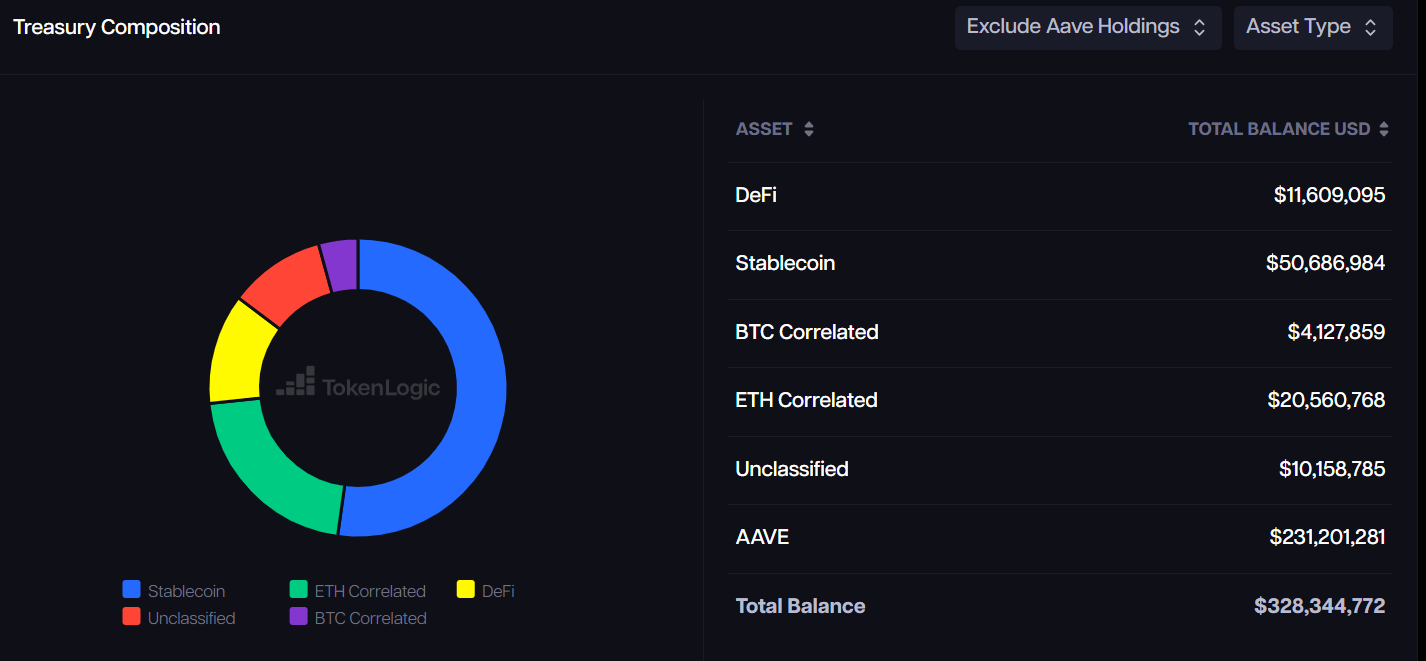Aave Considers Fee Switch as USDe Pegging Proposal Draws Concerns
Aave, a leading DeFi platform, is preparing to activate a fee switch mechanism to enhance its revenue model and ensure long-term sustainability.
Aave, a leading decentralized finance (DeFi) platform, is gearing up to introduce a fee switch mechanism aimed at boosting its economic model.
This step aligns with broader efforts to ensure long-term sustainability and deliver value to the Aave ecosystem.
Aave’s Fee Switch Initiative
On January 4, Stani Kulechov, Aave’s founder, hinted at plans to activate a fee switch initiative. This proposal aims to enhance the platform’s revenue management by enabling the Aave DAO to adjust how fees are collected and distributed.
Such mechanisms are common in DeFi platforms and typically reward token holders and stakers through transaction fee redistribution.
Aave’s robust financial standing supports this initiative. Its treasury holds nearly $100 million in non-native assets, including stablecoins, Ethereum, and other cryptocurrencies. When factoring in AAVE tokens, this figure exceeds $328 million, according to TokenLogic.
 Aave’s Treasury. Source:
TokenLogic
Aave’s Treasury. Source:
TokenLogic
Marc Zeller, founder of Aave Chan, first introduced the idea of a fee switch last year and emphasized its inevitability earlier this year. According to Zeller, Aave’s net revenue significantly surpasses its operational expenses, making the move not just viable but strategic.
“When your protocol treasury looks like this, and DAO net revenue is more than twice the Opex (incentives included), The Fee Switch isn’t an if; it’s a when,” Zeller stated.
Aave is the largest DeFi lending protocol, providing users with decentralized borrowing and lending options. According to DeFillama data, more than $37 billion worth of assets are locked on the platform.
Aave’s USDe-USDT Proposal Sparks Criticism
Meanwhile, the Aave community is also evaluating a more contentious proposal to link Ethena’s USDe, a synthetic stablecoin, to Tether’s USDT.
This change would align USDe’s price with USDT using Aave’s pricing feeds, replacing the existing Chainlink oracle. The goal is to mitigate risks associated with price fluctuations and unprofitable liquidations.
USDe stands out from traditional stablecoins like USDT due to its reliance on derivatives and digital assets like Ethereum and Bitcoin rather than fiat reserves. USDe is the third-largest stablecoin, behind USDT and USDC, according to DeFillama data.
Despite significant support for the proposal, some community members have argued that it could create conflicts of interest, as advisors involved in drafting the proposal have ties to Aave and Ethena. Critics, like ImperiumPaper, have suggested that these advisors recuse themselves to ensure impartiality.
“LlamaRisk is on Ethena’s Risk Committee, which comes with monthly compensation. Ethena hired Chaos early on to help design and develop the risk frameworks used by Ethena. Both should recuse themselves from any oversight of USDe parameters,” Imperium Paper stated.
Disclaimer: The content of this article solely reflects the author's opinion and does not represent the platform in any capacity. This article is not intended to serve as a reference for making investment decisions.
You may also like
Franklin Templeton Enters Solana ETF Race with SEC Filing

Litecoin ETF Approval Odds Surge as Key Listing Boosts Optimism

SHIB Whale Activity Plummets: What’s Next for Shiba Inu?

5 Best Cheap Cryptocurrencies to Buy Under 1 Dollar February 21 – SPX6900, Movement, The Graph

